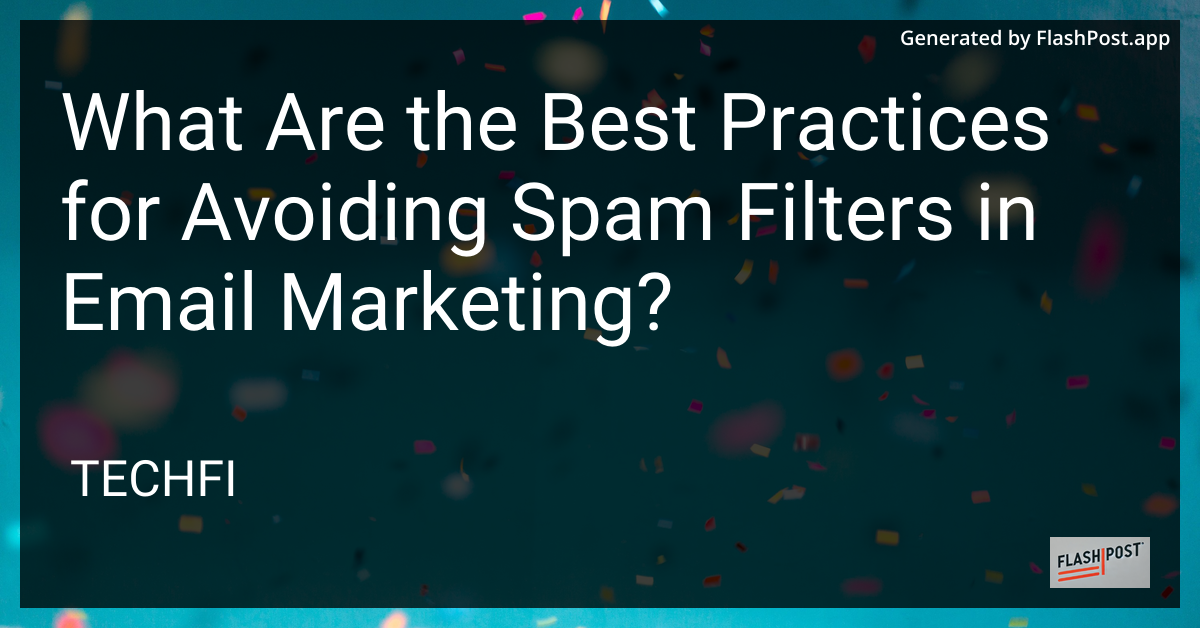What Are the Best Practices for Avoiding Spam Filters in Email Marketing?

Email marketing is a potent tool for engaging with your audience and promoting your brand. However, getting your emails past spam filters is a common challenge marketers face. By following best practices, you can significantly enhance your delivery rates and ensure your messages reach the intended inbox. Here are the best practices for avoiding spam filters in email marketing:
1. Build a Clean and Permission-Based List
Always start with permission-based email lists. When users consent to receive your emails, your campaigns become more effective and less likely to be marked as spam. Utilize double opt-in methods to confirm a user’s intent to receive your communications. This practice not only ensures your list is clean but also improves engagement rates.
2. Craft a Trustworthy Subject Line
Subject lines are the gatekeepers of email marketing. A misleading or spammy subject line may trigger spam filters or prompt recipients to mark your email as spam. Avoid using all-caps, excessive punctuation, or spammy words like “Free” or “Buy now.” Keep your subject lines clear, concise, and relevant to your content.
3. Maintain a Healthy Sender Reputation
Your sender reputation significantly affects your email deliverability. Continuously monitor and manage your sender score. Avoid high bounce rates by cleaning your list regularly, and ensure that any invalid or non-responsive email addresses are removed.
4. Balance Text and Images
Emails overly reliant on images or with an improper text-to-image ratio often get flagged by spam filters. Ensure your emails have a balanced ratio, using text to convey your message along with supportive visuals. Additionally, always use alt-text for images, so the purpose of the image is clear even if it doesn’t load.
5. Authenticate Your Emails
Utilize email authentication protocols like SPF, DKIM, and DMARC. These protocols validate your emails as legitimate, reducing the likelihood they'll be marked as spam. Correct authentication also helps protect your brand from being spoofed by malicious senders.
6. Personalize Your Emails
Personalized emails resonate better with recipients and reduce the chances of being marked as spam. Use the data you have about your subscribers to customize your emails to their interests, demographics, or previous interactions.
7. Test Your Emails Before Sending
Before launching your campaign, test the emails through various spam-checking tools. These tests help identify potential triggers and issues that might cause your email to land in the spam folder. By reviewing these reports, you can make necessary adjustments.
8. Include Unsubscribe Link
Although it may seem counterintuitive, always include an easy way for recipients to unsubscribe. Not offering an unsubscribe option can trigger spam complaints, damaging your reputation.
Helpful Resources:
- Learn more about localhost email sending.
- Explore email sending using Gmail SMTP in CodeIgniter.
- Discover PowerShell email sending.
- Find out about email sending in PHP.
- Get tips on automated email sending.
By adhering to these best practices, you can improve your email marketing success rate and foster stronger relationships with your audience. Navigate the intricacies of email marketing with strategy and precision, ensuring your messages make the desired impact without being derailed by spam filters. ```